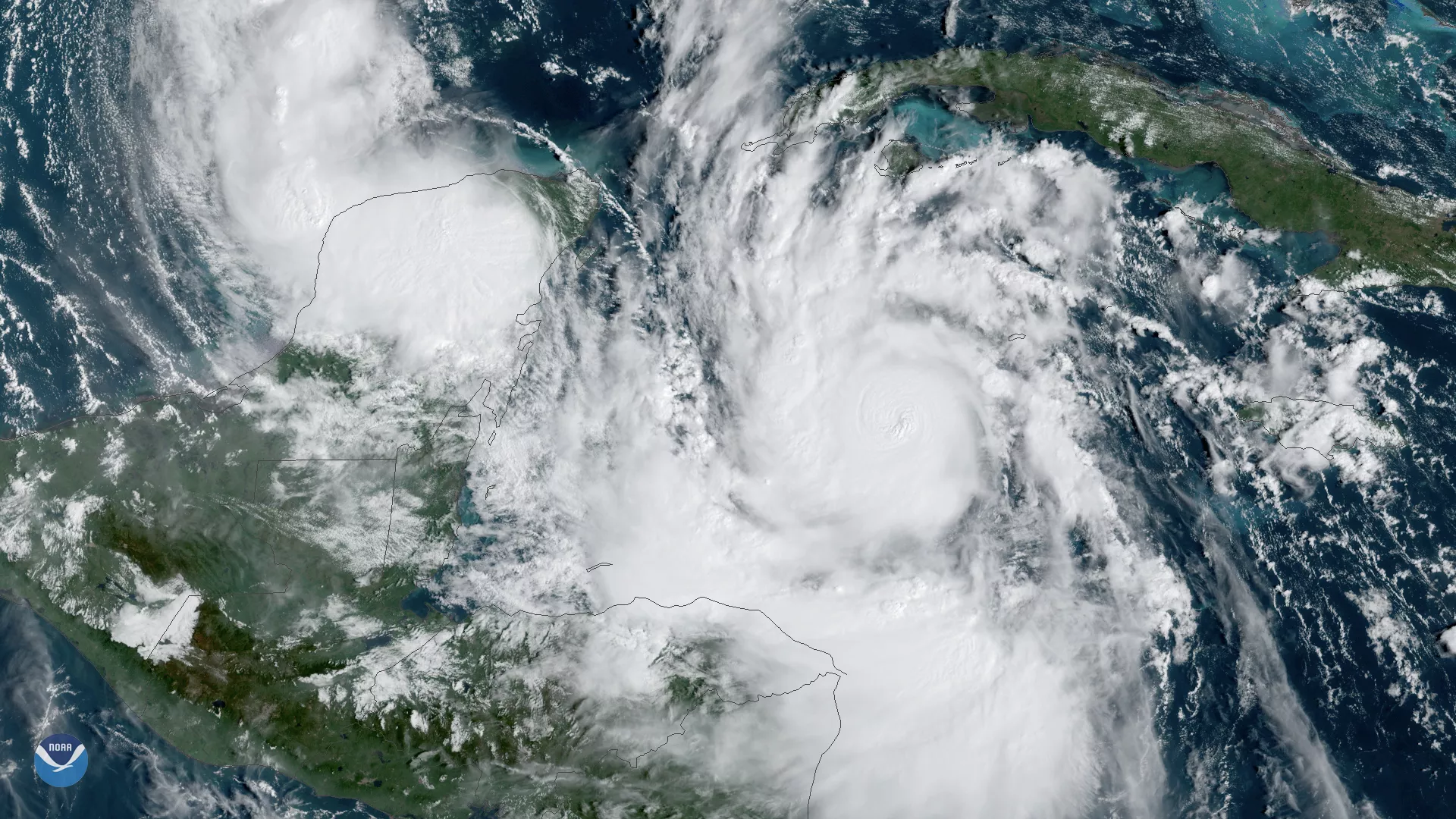
The GOES-East satellite tracked Hurricane Delta as it rapidly intensified from a tropical storm over the Caribbean Sea. As of 11:20 a.m. ET on Oct. 6, 2020, the storm’s maximum sustained wind speeds reached 130 mph, making it a major Category-4 hurricane on the Saffir-Simpson Hurricane Wind Scale, and it was expected to continue strengthening. According to the National Hurricane Center, an “extremely dangerous storm surge and hurricane conditions are expected over portions of the northern Yucatan Peninsula beginning tonight.”
After passing the peninsula, the storm was expected to swing up over the warm waters of the Gulf of Mexico and make landfall along the northern Gulf Coast—likely somewhere in Louisiana—by Friday or Saturday. Additionally, areas from Texas through the Florida panhandle were put on alert.
Delta is not only the earliest 25th named Atlantic storm on record; it is also the second time that the Greek letter Delta has been used to name a storm. The previous Delta storm formed on November 15, 2005. Additionally, if Delta makes landfall on the Gulf Coast, it will be the first time on record that 10 named storms have done so in the U.S. in one season, breaking the 1916 record of nine landfalling storms.
The GOES-East geostationary satellite, also known as GOES-16, keeps watch over most of North America, including the continental United States and Mexico, as well as Central and South America, the Caribbean, and the Atlantic Ocean to the west coast of Africa. The satellite's high-resolution imagery provides optimal viewing of severe weather events, including thunderstorms, tropical storms, and hurricanes.